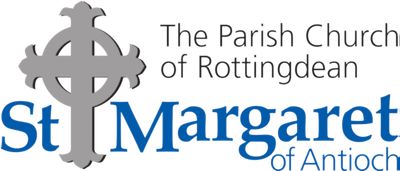1
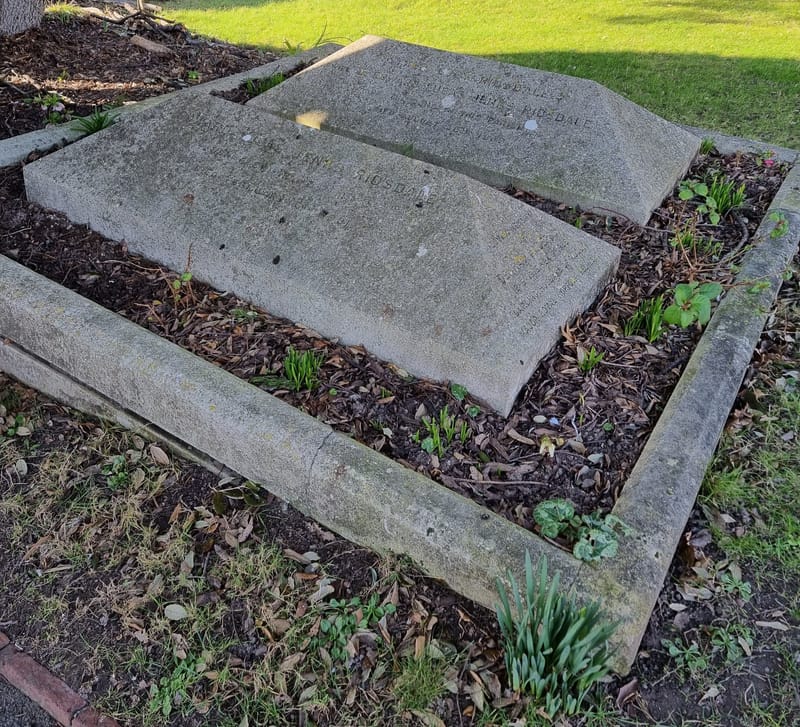
The Ridsdale family lived at The Dene [view], the large house and gardens opposite the church near the pond. (The Dene now provides retirement housing, having been run for many years by the Teachers Housing Association.) Unlike the Burne-Jones's, the Ridsdales embraced the modern; they enjoyed technological advances so were the first in Rottingdean to have their own telephone, and Edward Ridsdale was also instrumental in bringing mains water to Rottingdean from Brighton in 1884, when the village had previously been dependent on well water distributed from the public wells by donkey-cart. Edward Ridsdale was undoubtedly unusually wealthy: for many years he was the Master of the Queen's Assay at The Royal Mint, and a lighthearted reference to being 'weighed in God's balance' in the grave inscription suggests an affectionate fondness for him on the part of the younger members of his family.
Edward and Esther's son, Arthur Ridsdale, was a well-known figure in late-Victorian social life, and was the inspiration for the jovial sporting doctor Arthur Brandwick in Siegfried Sassoon's 'Memoirs of a Fox-Hunting Man'. Their daughter Lucy married Conservative prime minister Stanley Baldwin in 1892, at Rottingdean church. Lucy was a keen cricketer, possibly encouraged by having permissive parents, and was a member of the White Heather Club, the first cricket club for women; she may well have met Baldwin at a women's cricket match. Following the inspiration of Georgiana Burne-Jones (grave [13a]) Lucy Baldwin promoted the cause of better healthcare for poorer women, particularly the training and local deployment of professional midwives to reduce birth-related mortality, and the more widespread use of anaesthetics in childbirth. Her work contributed to significant legal reforms in the Midwives Act 1936, which raised the status of midwives as healthcare professionals in their own right.
Stanley Baldwin was a cousin of Rudyard Kipling, through a maternal connection to Alice Kipling and Georgiana Burne-Jones. The Kiplings and the Baldwins had all visited the Burne-Jones family in Rottingdean, particularly in the summer months, so a social circle formed in the village, based around various owned and rented seaside properties.

Stanley and Lucy Baldwin (nee Ridsdale)
Edward Ridsdale was not a stereotypical Victorian parent in many ways, and he rather enjoyed family life. Angela Thirkell (grave [13b]) remembered seeing:
"...old Mr. Ridsdale" walking past the Green "...looking like a patriarch with his white beard, velvet coat, and peculiar soft hat, shoulders a little bowed and his hands clasped behind him, accompanied by his little grandson Oliver Baldwin, who rejoiced the village by falling unconsciously into an exact reproduction of his grandfather's gait as golden hair walked by white hair."
Thirkell recalls the Ridsdale's home being full of family members of several generations, who were encouraged to express themselves freely, go barefoot, and engage in intellectual arguments. Esther, the matriarch, organised many communal picnics on the Downs, with a cart pulled by heavy horses provided to collect the families from the houses around the Green, carry them up to windmill hill, and drop them home again at the end of the day. She has her own plaque inside the church on the northern wall (see below).
Lucy's elder brother Edward Aurelian Ridsdale was a Liberal politician and leading member of the British Red Cross Society. He was Member of Parliament for Brighton from 1906 to 1910. In 1900 he wrote a poem about his ealy life in the village, 'Memories of Rottingdean'...
Then let us leave Life's present cares
For the waters of what has been,
And search the rivulet that bears
The years of Rottingdean.
Full quick and fast old faces rise,
Friends loved - but not in vain -
Start, with a warmth that never dies,
To clasp our hands again.
 |  |
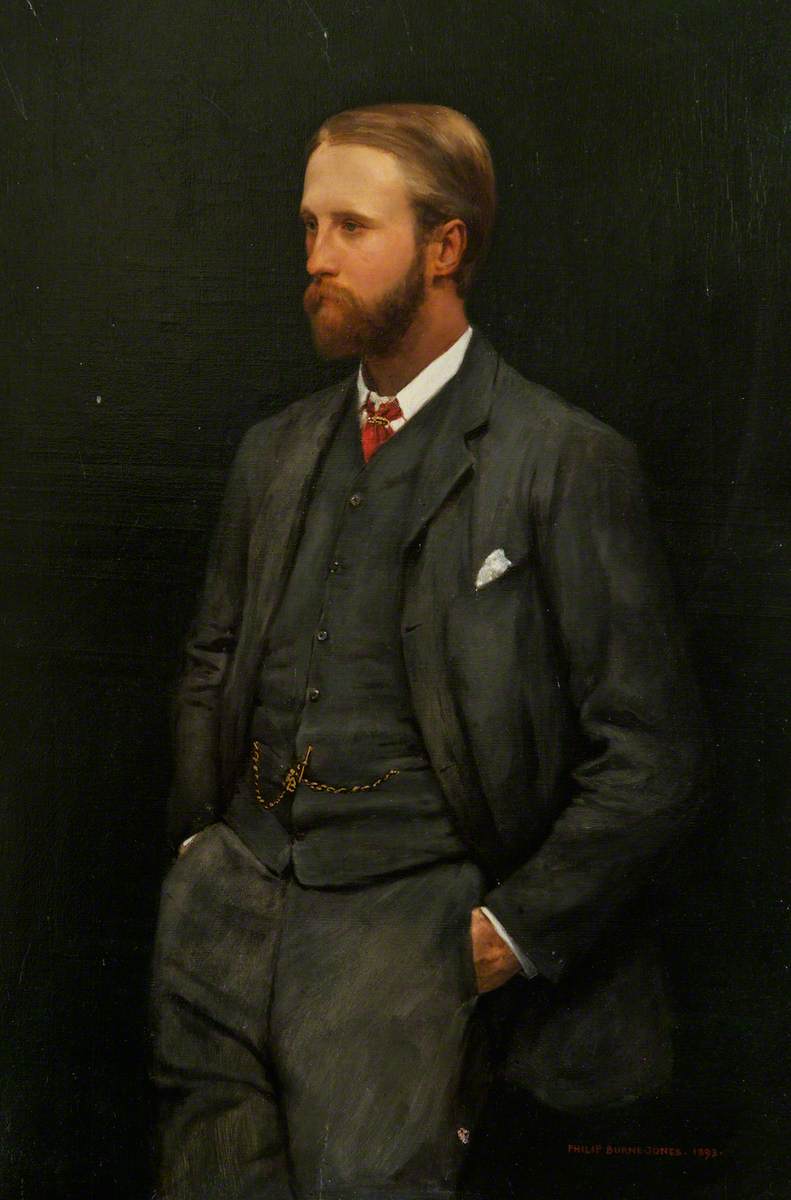 | 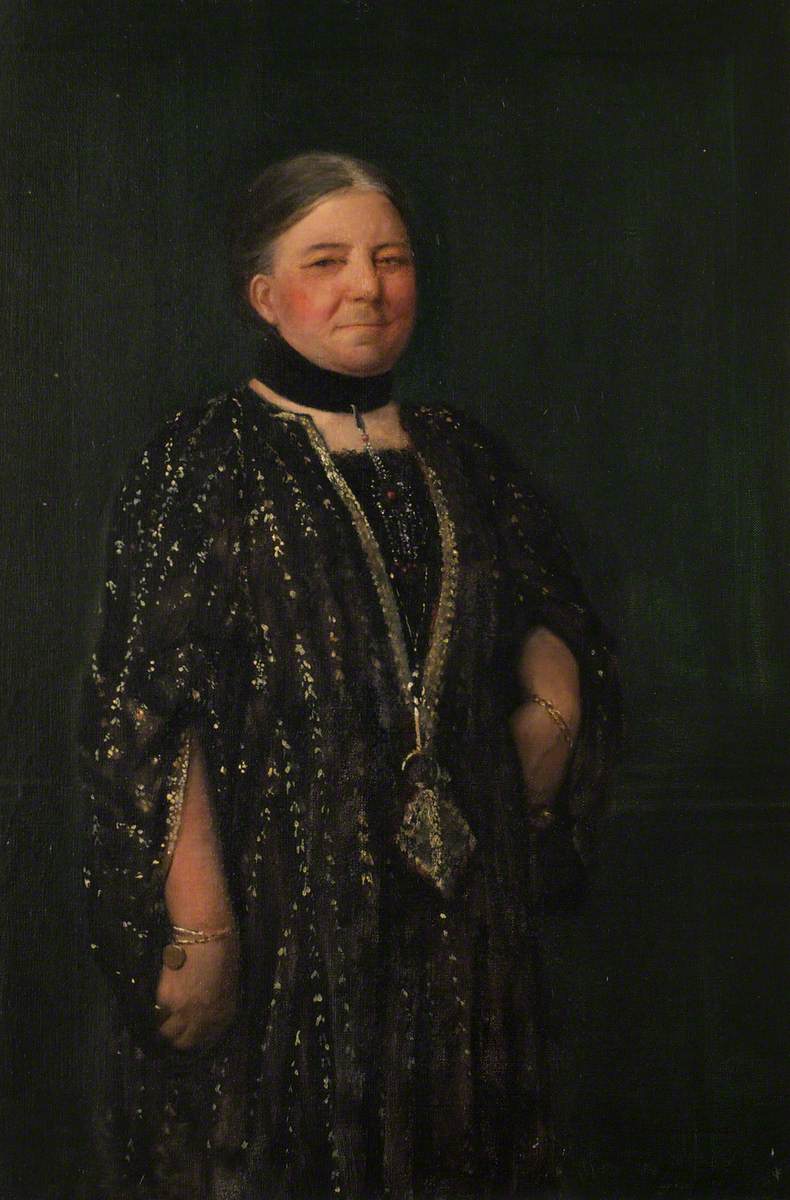 |
Paintings of Edward Lucas Jenks Ridsdale, his daughter Lady Susan Stirling Ridsdale, son Edward Aurelian Ridsdale and wife Lady Esther Lucy Thacker Ridsdale by Edward Burne-Jones
Scolton Manor Museum, Pembrokeshire
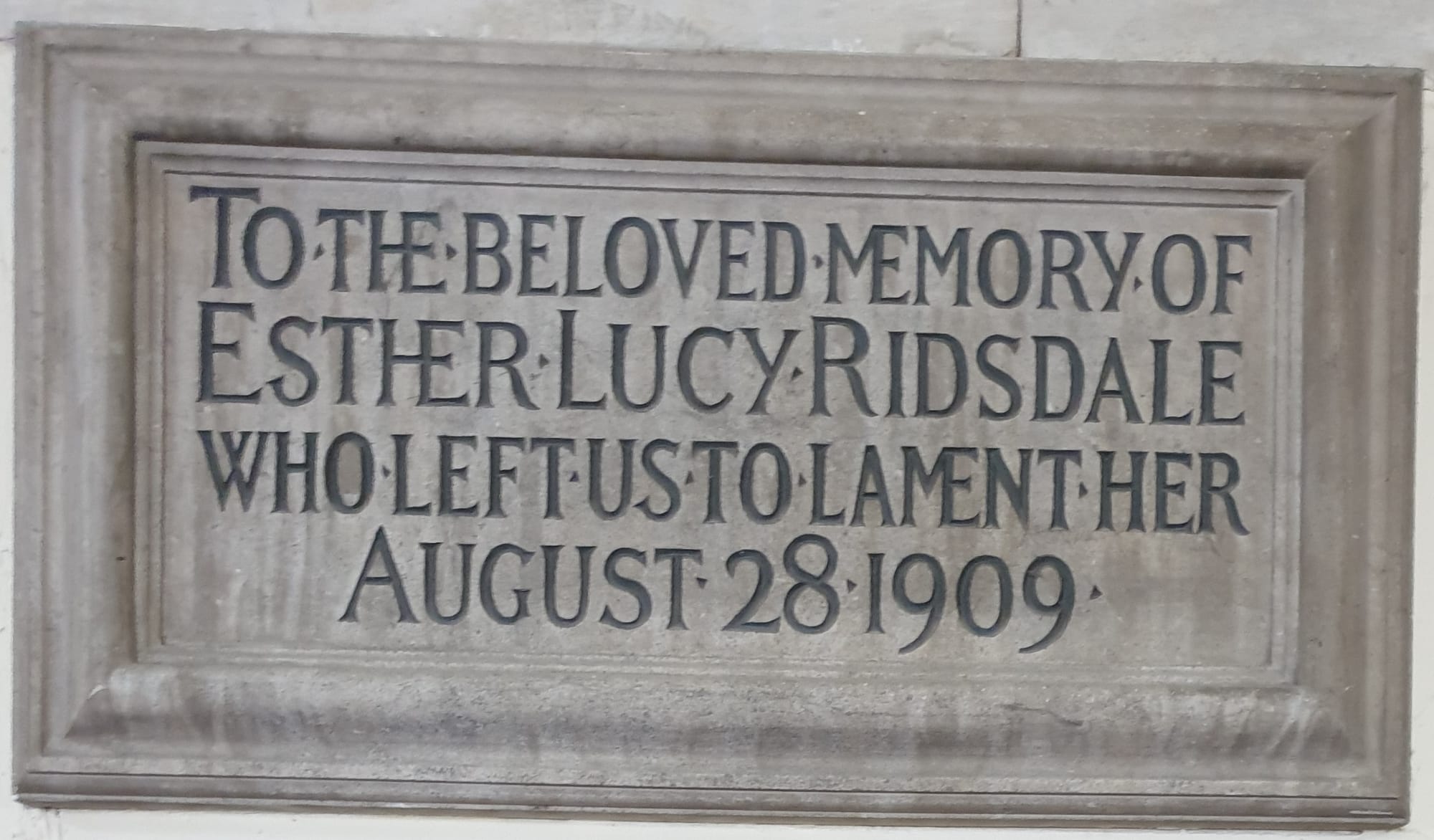 Esther Lucy Risdale's plaque inside the church.
Esther Lucy Risdale's plaque inside the church.
